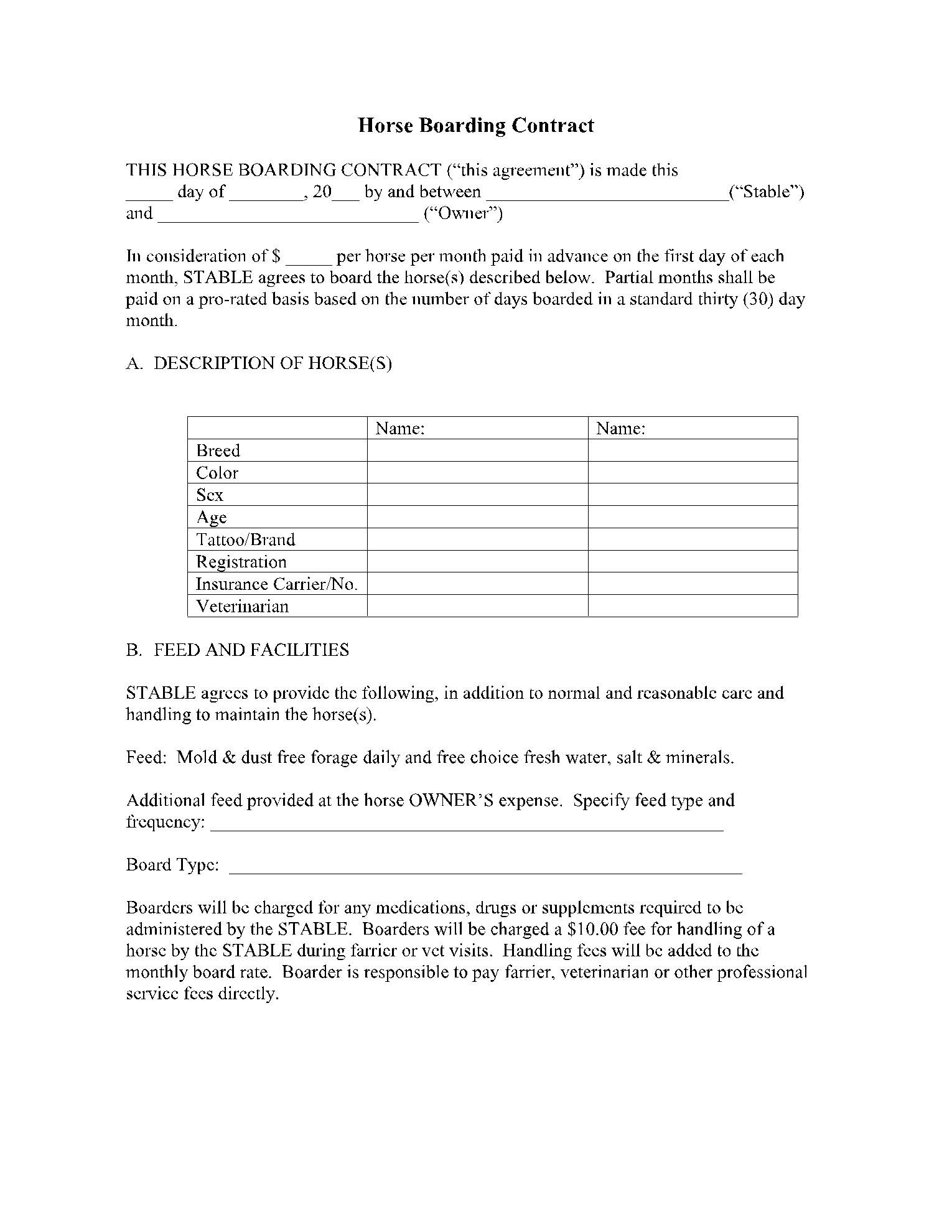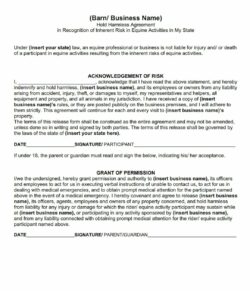Finding the perfect place to board your horse can feel like searching for a unicorn. You want a safe, comfortable environment where your equine friend will thrive. Once you’ve found that haven, you’ll need a solid horse boarding agreement to protect both you and the stable owner. Think of it as a roadmap, ensuring everyone understands their responsibilities and expectations from the very beginning. It doesn’t need to be complicated or filled with legal jargon. A simple, clear agreement is often the best way to go.
This document essentially lays out the terms of your horse’s stay. It covers everything from the monthly board fee to who is responsible for vet care. Having a written agreement prevents misunderstandings and can save you headaches down the road. It’s about establishing clear communication and building a strong, trusting relationship with the boarding facility.
In the world of horses, things can sometimes get a little… unpredictable. A well-crafted simple horse boarding agreement template acts as a safety net, providing a framework for handling potential issues that may arise. It offers peace of mind knowing that you and the stable owner are on the same page. Let’s explore what makes up a good one.
Key Elements of a Horse Boarding Agreement
A comprehensive horse boarding agreement should cover several key areas to ensure clarity and protect both the horse owner and the stable owner. Think of it as a living document that can be adjusted as needed, but always with mutual consent. It’s not about creating a rigid contract, but rather establishing a foundation of understanding and respect.
First and foremost, the agreement should clearly identify the parties involved: the horse owner (also known as the boarder) and the stable owner (or facility operator). Include their full legal names and contact information. This seems obvious, but it’s a crucial first step in establishing a legally sound document. Furthermore, you’ll need to clearly identify the horse being boarded. Include the horse’s registered name, breed, age, color, markings, and any identifying features like a microchip number. The more detail, the better to avoid any confusion.
Next, outline the specific boarding services being provided. This is where you detail exactly what the monthly board fee covers. Does it include daily turnout, feeding, stall cleaning, blanketing, or use of the facility’s amenities like arenas or trails? Be as specific as possible to avoid disagreements later on. For example, specify the type and quantity of feed provided. If you have special feeding requirements, make sure those are clearly documented.
The agreement should also address health and veterinary care. Who is responsible for calling the vet in case of an emergency? Who is responsible for paying the veterinary bills? Include a clause that allows the stable owner to contact your preferred veterinarian in case of an emergency if you are unreachable. You should also provide proof of vaccinations and deworming schedule. This helps maintain the health and safety of all the horses at the facility.
Finally, the agreement should address liability and insurance. It’s essential to understand who is responsible for any injuries or damages caused by the horse or occurring to the horse while at the facility. Both the horse owner and the stable owner should have adequate insurance coverage to protect themselves in case of accidents or injuries. A well-defined liability clause can prevent costly legal battles down the road.
Creating Your Simple Horse Boarding Agreement Template
Creating your own simple horse boarding agreement template doesn’t have to be daunting. There are many resources available online to help you get started. You can find templates that you can customize to fit your specific needs. The key is to tailor the agreement to reflect the unique circumstances of your boarding arrangement.
Start by reviewing several different templates to get a feel for the common clauses and provisions. Pay attention to the language used and how different templates address specific issues. This will help you identify the elements that are most important to include in your own agreement. Don’t be afraid to adapt and modify the templates to suit your individual situation.
Consider consulting with an attorney who specializes in equine law. While a simple agreement may suffice in many cases, an attorney can provide valuable insights and help you ensure that your agreement is legally sound and protects your interests. This is especially important if you have a complex boarding arrangement or if you are concerned about potential liability issues. Spending a little money on legal advice upfront can save you a lot of money and headaches in the long run.
Remember to keep the language clear and concise. Avoid using legal jargon that may be difficult for either party to understand. The goal is to create a document that is easy to read and comprehend. This will minimize the risk of misunderstandings and ensure that everyone is on the same page. Plain language is your friend in creating a solid agreement.
Once you have created a draft of your agreement, share it with the other party for review and feedback. Be open to making changes based on their suggestions. The goal is to create an agreement that is mutually acceptable and reflects the shared understanding of both parties. This collaborative approach will foster a stronger relationship and promote a more positive boarding experience.
Ultimately, the goal of any boarding arrangement is to provide a safe and comfortable environment for the horse. Clear communication and mutual respect are essential for a successful partnership. A well-crafted agreement, even a simple horse boarding agreement template, is a cornerstone of that success.
Think of the process as building a partnership. The more communication and transparency you build in, the stronger the relationship will be. A solid agreement is the first step towards a happy horse and a stress-free boarding experience.


